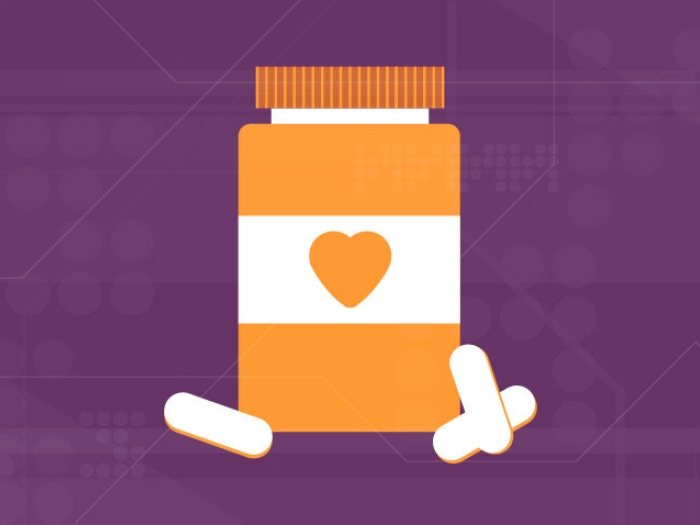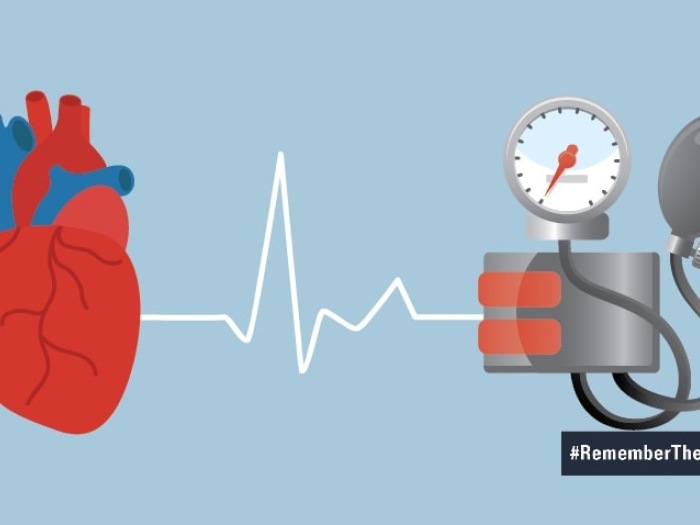Pulmonary hypertension is often misdiagnosed, so it’s important to recognize the particulars of the disease.
1:00 PM
Author |

Pulmonary hypertension (PH) is high blood pressure in the loop of vessels connecting the heart and lungs. This system carries fresh oxygenated blood from the lungs to the heart while returning "used" oxygen-depleted blood back to the lungs.
MORE FROM THE HEALTH BLOG: Subscribe to our weekly newsletter
In patients with PH, the heart must work harder to pump blood back to the lungs.
Pulmonary hypertension often develops slowly, without early signs and symptoms. And when signs of trouble do occur, they may be mistaken for asthma or another lung or heart condition.
Although November is Pulmonary Hypertension Awareness Month, being informed about the potentially fatal disease is vital year-round. Here are some of the most common questions:
What are the common symptoms?
While shortness of breath is the main symptom of PH, others include:
-
Fatigue
-
Chest pain
-
Racing heartbeat
-
Feeling light-headed, especially during physical activity
-
Fainting
-
Swelling in the ankles or legs
Who is most at risk?
According to Vallerie McLaughlin, M.D., director of the Pulmonary Hypertension Program at the University of Michigan Frankel Cardiovascular Center, PH may have no known origin.
But it also can be genetic, which is why having a family member with pulmonary hypertension increases your risk of developing the disease.
Drugs or toxins are among the other known causes — as are some underlying diseases or conditions, including congenital heart disease, HIV, liver disease and connective tissue diseases such as scleroderma.
How is PH diagnosed and treated?
A variety of tests and procedures are used to diagnose pulmonary hypertension and to identify its cause and severity. Common diagnostic tests include a chest X-ray, electrocardiogram and catheterization of the right heart.
SEE ALSO: How to Reduce the Risk of Deep Vein Thrombosis While Traveling
Pinpointing the underlying cause may involve a chest CT scan, chest MRI, lung function tests, polysomnogram, lung ventilation/perfusion scan and blood tests.
Once a PH diagnosis is made, exercise testing can help determine the extent of a patient's condition. The test measures how well the heart and lungs work while the patient is on a treadmill or bicycle. Exercise testing may be ongoing during treatment in order to monitor a patient's progress.
Due to the complex nature of the disease, each patient's treatment protocol must be tailored and carefully monitored on a regular basis. Treatment methods include medical therapies, clinical trials, lung transplantation and pulmonary thromboendarterectomy (a surgery to remove blood clots).
How can I modify my lifestyle?
The American Heart Association recommends these lifestyle changes to improve pulmonary hypertension symptoms:
• Quit smoking. Your doctor can recommend programs and products to help.
• Follow a healthy diet. Eat a variety of fruits, vegetables and whole grains, as well as lean meat, poultry, fish and low-fat or fat-free milk. Your diet should be low in fat, cholesterol, sodium and sugar.
• Watch your weight. A daily record of your weight can help you be aware of rapid weight gain, which may be a sign your pulmonary hypertension is worsening.
• Stay active. Incorporate physical activity, such as walking, into your lifestyle. Discuss the level of activity with your doctor. Avoid straining or lifting heavy weights. Rest when you need to.
• Avoid sitting in a hot tub or sauna or taking long baths, all of which will lower your blood pressure.
• Be cautious about air travel or high-altitude locales. You may need to travel with extra oxygen.
• Get support for the anxiety and stress of living with pulmonary hypertension. Talk with your health care team, or ask for a referral to a counselor. A support group for people living with pulmonary hypertension can be invaluable in learning how to cope with the illness.
Disclosure: McLaughlin does consulting work for Actelion, Akros, Bayer Healthcare, Steadymed and United Therapeutics.

Explore a variety of health care news & stories by visiting the Health Lab home page for more articles.

Department of Communication at Michigan Medicine
Want top health & research news weekly? Sign up for Health Lab’s newsletters today!





